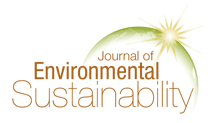Creative Commons License

This work is licensed under a Creative Commons Attribution 4.0 International License.
Abstract
This paper seeks to assess the three major university sustainability rating systems in the United States on their ability to drive positive sustainability outcomes. Since the mid-2000s the Association for Advancement of Sustainability in Higher Education, the Princeton Review, and the Sierra Club have attempted to rate universities on their sustainability policies and practices. A wide range of actions are rated by these organizations, from energy usage to transportation to procurement to academic offerings in the field of sustainability. This analysis shows that each organization values sustainability in different ways – for example, academics/co-curricular activities accounted for anywhere from 16%-49% of the total points available across the three rating systems. This paper also measured criteria in terms of inputs versus outputs, where inputs measure actions taken, outputs measure results or outcomes – a question of vision versus execution. There is a greater emphasis on input criteria than output criteria in overall scoring across each rating system, despite the fact that outputs are more suitable for measuring actual progress on sustainability. I offer suggestions as to how to adjust criteria to be more results-oriented.
Recommended Citation
Albis, James M.
(2017)
"University Sustainability: Assessing College Sustainability Rating Systems,"
Journal of Environmental Sustainability: Vol. 5:
Iss.
1, Article 3.
Available at:
https://repository.rit.edu/jes/vol5/iss1/3
Included in
Educational Assessment, Evaluation, and Research Commons, Environmental Education Commons, Higher Education Commons, Sustainability Commons
